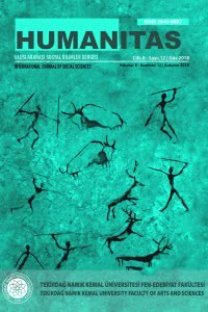Kremlin Yanıyor: Alevlerin Dilinden 18. Yüzyıl Rusya’sı
Rus toplumu ve kültürü, 18. yüzyıl Rusya’sı, facia soruşturması, Rus bürokrasisi, medeni ve ahlaki görev
Kremlin on Fire:18th Century Russia Through the Tongues of Flame
18th century Russia, disaster investigation, Russian bureaucracy, Russian society and culture, civil and moral duty,
___
- Baynes, T.S. (1878). Anna Ivanovna. In Encyclopædia Britannica (p. 60). New York: Charles Scribner's Sons.
- Ginzburg, C., Tedeschi, J., & Tedeschi, A. (1980). The cheese and the worms. London: Routledge & Kegan Paul.
- Le Donne, J. P. (1993). The eighteenth-century Russian nobility [Bureaucracy or ruling class?]. doi:10.3406/cmr.1993.2341
- Lipski, A. (1956). A Re-Examination of the "Dark Era" of Anna Ioanovna. American Slavic and East European Review, 15(4), pp. 477–488. doi:10.2307/3001306
- Lipski, A. (1959). Some Aspects of Russia's Westernization during the Reign of Anna Ioannovna, 1730-1740. American Slavic and East European Review, 18(1), pp. 1-11. doi:10.2307/3001041
- Pintner, W. M. (1970). The Social Characteristics of the Early Nineteenth-Century Russian Bureaucracy. Slavic Review, 29, 429-443. Retrieved from http://www.jstor.org/stable/2493158
- Robinson, J. H. (1904). The Historical point of View. Readings in European History, 1, 1-13.
- Segrillo, A. (2016, 11 16). A First Complete Translation into English of Peter the Great’s Original Table of Ranks. University of Sao Paulo, Brazil: LEA Working Paper Series.
- Sinel, A. A. (1976). The Socialization of the Russian Bureaucratic Elite, 1811-1917: Life at the Tsarskoe Selo Lyceum and the School of Jurisprudence. Russian History, 3, 1-31. Retrieved from http://www.jstor.org/stable/24649623
- Беседина, М. Б. (2009). Прогулки по допетровской Москве. Москва: Астрель.
- Салтыков-Щедрин, М. (1863). Наша общественная жизнь (Vol. 6). Москва, Россия: Художественная Литература.
- Сумкина, А. И. (1981). Памятники московской деловой письменности XVIII века : сборник. Москва: Наука.
- Фальковский, Н. И. (1950). Москва в истории техники. Москва: Московский рабочий.
- Шмидт, С. О. (1997). Пожарная охрана. In Энциклопедия «Москва». Москва: Большая Российская энциклопедия.
- ISSN: 2147-088X
- Yayın Aralığı: Yılda 2 Sayı
- Başlangıç: 2013
- Yayıncı: Namık Kemal Üniversitesi
Şiddet İçerikli Bilgisayar Oyunlarının Ergenlerin Saldırganlık Eğilimine Etkisi
Batılı Paradigmaların Dönüştürücülüğü Bağlamında Tanzimat Şiirinde Deist Etkiler
Thomas Mann’ın Venedik’te Ölüm Adlı Yapıtında Mitolojik İzlekler
Çağdaş Amerikan Şiirinde Irak Savaşı
Iris Murdoch’ın Yapısalcılığı: Dile Olan Güvensizlik
Monomitik Kurmaca Söylem Olarak Oluşum Romanı: Büyük Umutlar'da Kimlik Oluşumu ve Öne Sürümü
